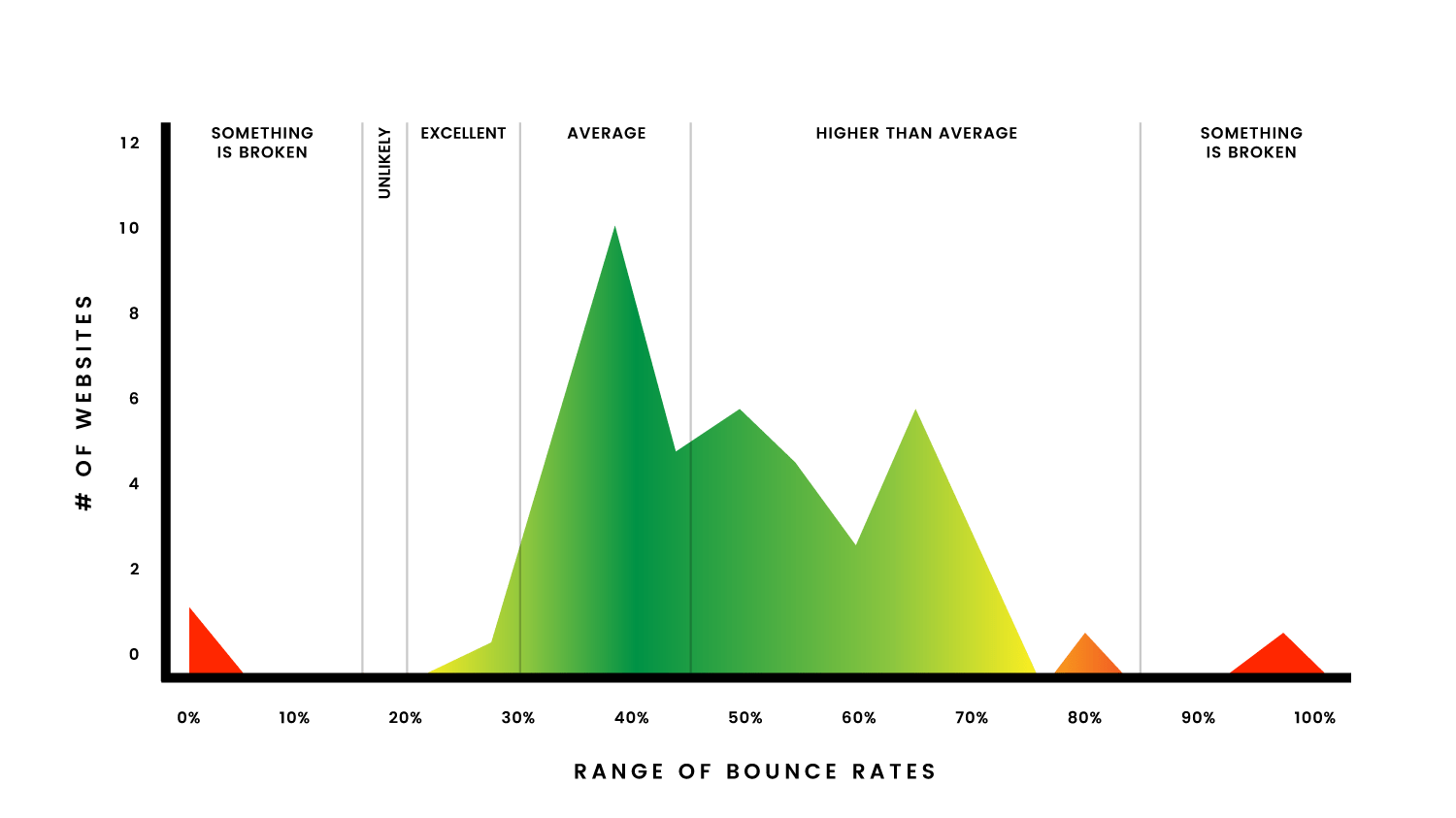
4 min read
Unreal bounce rate? It’s probably too good to be true.
Unreal bounce rate? It’s probably too good to be true.
Does your site appear to have a fantastic but inaccurate bounce rate? Maybe you’re perfectly targeting and converting almost everyone who visits your site. Or maybe it’s because you have the Google Analytics tag installed twice.
What is a Bounce Rate?
A bounce happens when a person comes to a site and immediately leaves. Your website’s bounce rate is the percentage of visitors who navigate away from the site after viewing only one page. A high bounce rate means that most people are visiting one page of your site, likely losing interest, and then leaving. A low bounce rate often indicates a lot of interest in exploring your website.
Marketers often rely on bounce rates to tell them whether their content is effective at converting visitors into customers. If a page gives visitors what they’re looking for, whether it’s an interesting story, the answer to a question, or a thought-provoking statement relevant to something they’re experiencing, then the hope is that they will want more, motivating them to navigate to other pages on your site.
Your website’s bounce rate can be a good indicator of how well you’re resonating with your target audience.
>> New website not performing? If so, you’re not alone. Find out how we help companies dealing with beautiful websites that simply don’t work.
Recognizing an Inaccurate Bounce Rate
There is no hard and fast rule about what your website’s bounce rate should be. Like most marketing data, bounce rates are a tool that can help marketers understand what’s working and what isn’t. They aren’t the only way to know if your website content is relevant, so be careful not to overly prioritize your target bounce rate.
RocketFuel research shows that bounce rates ranging from 26% to 40% are exceptional. If your bounce rate reaches over 70%, that’s a good indicator that your website is not doing its job.

(Image Credit: RocketFuel, THE ROCKET BLOG, Good, Bad, Ugly, and Average Bounce Rates)
We recently worked with two different clients whose websites appeared to have fantastic, but inaccurate bounce rates. One website was experiencing a 13% bounce rate, which means that 87% of visitors were (supposedly) motivated to explore the site further. The other client’s website was experiencing a bounce rate of only 1%!
It is extremely unlikely that any website has a bounce rate of only 1%. That would mean that your website content is relevant and nuanced enough to effectively motivate 99% of visitors to explore further. Rather than patt our client on the back and say, “Our work here is done!” We looked into what was generating this inaccurate bounce rate.
We discovered that when there are multiple Google Analytics tags installed on a site, they fire back to back automatically. Instead of seeing a user bounce, Google sees it as the user just refreshed the page. This leads to inaccurate bounce rates, false pageview counts, and false representations of how much time visitors are spending on various pages.
When installing Google Analytics using Google Tag Manager, users are required to configure a tag, naming it and assigning it a tracking type. This one tag, once installed, is all that’s needed to receive all sorts of Google Analytics data, including numbers of visitors, page views, time spent on the website, bounce rate, incoming traffic sources, goal conversions, and more.
Don’t make the mistake of assuming that you need to install a separate Google Analytics tag for each tracking type. Instead, just create one tag. This is all you need to properly install Google Analytics.
Learn More
Looking for a web development company that can build beautiful websites that actually work? Not only do we care about your conversion goals, we know how to develop a website that makes those goals achievable.


Leave a Reply